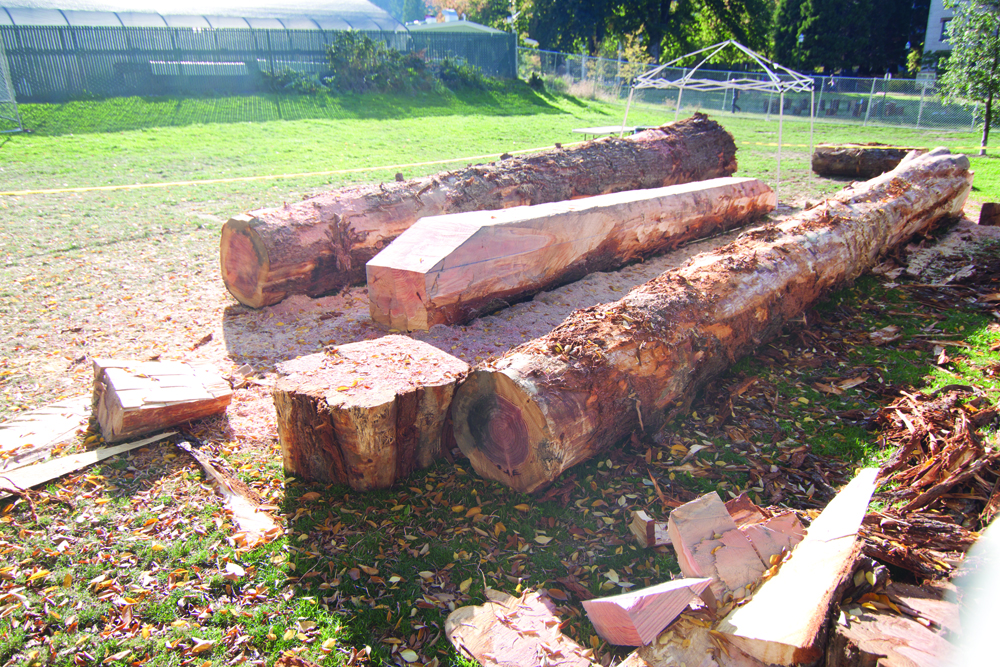PSU seeks carbon neutrality by 2040
2010 Climate Action Plan serves as “road map” to implement goals Anna Snook Vanguard staff In a time when “going green” straddles the line between being a joke and a serious undertaking, it’s hard to tell what needs to be done and what can actually be accomplished. Portland State is forging ahead with its own Climate Action Plan that outlines what the university will do to create a carbon-neutral campus by 2040. Carbon neutrality is a point that’s reached when the carbon emissions are completely offset by sustainability. This can be achieved by using less energy, producing less waste and efficiently using the rest. “Carbon reductions are this idea of a clean energy future,” said Fletcher Beaudoin, the environmental programs manager at the Campus Sustainability Office. “There’s a market for it, there are jobs for it. There’s increasing support for cleaner, greener energy in our [society].” PSU’s CAP includes an overview of the university’s data collection and analyses, the specific goals and targets of the action plan and its appropriate implementation, including changes in business travel, building renovations and development of future green projects on campus. In 2007, PSU signed on to the American College & University Presidents’ Climate Commitment, which now boasts 685 colleges across the nation, 16 of which are Oregon schools. The challenge posed to the colleges is to reduce their carbon footprints, and possibly reach a goal of carbon neutrality. “This is not a traditional form of planning,” Beaudoin said. “This is kind of a new realm of planning. For PSU, it’s important to have a plan in place, because so much of what we preach is [carbon neutrality].” However, the concept of carbon neutrality is not necessarily new to the university. As early as 1994, PSU began measures such as tracking student and employee commuting. In 2003, a group of students put together a carbon inventory with the CSO. But in 2007, PSU agreed to start tracking more greenhouse gas emissions. According to the CAP, the university emitted approximately 106,000 metric tons of CO2 in the 2008 financial year. Almost 50 percent of the emissions were from purchased materials, which were followed by buildings. The rest of the emissions stemmed from travel and commuting. Between 2000 and 2008, PSU reduced its energy-use index by 8 percent. Today, five PSU buildings have been certified-two gold and three silver certifications-by the U.S. Green Building Council’s Leadership in Energy and Environmental Design program. With data collection underway, the university has set some goals: 80 percent reduction of campus CO2 emissions by 2030, and complete carbon neutrality by 2040. The CAP stipulates one-year goals and three-year goals that will be points at which the plan will be reassessed to get a better grasp on how best to reach the ultimate carbon neutrality goal. “We think we have a good idea of how to reduce emissions by 80 percent,” Beaudoin said. “[We want] a solid road map for specific actions we want to take, and can take. We want it to be something that’s feasible, very actionable and doable.” Something like, ‘Wow, this might actually happen!'” Some of these ideas include reducing both drive-alone travel to campus and the demand for energy on campus, promoting better space usage on campus and the cutting back of waste production. The CAP also explains that PSU’s carbon footprint is a collective of many individuals, including students, staff, faculty and community members. The CAP reads, “The PSU 2010 Climate Action Plan highlights existing programs that make positive choices easy, and identifies areas where departments can help PSU community members improve their choices.” A copy of Portland State’s 2010 Climate Action Plan can be found online at www.pdx.edu. “We don’t need to stay in our comfort level,” Beaudoin said. “We need to push to do aggressive things. We feel that it’s time for us to really become serious [about carbon emissions], and stop just talking about it.”



